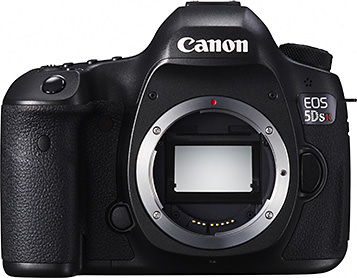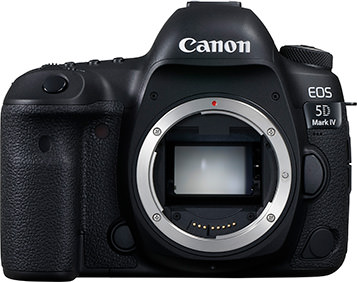Professional photographer, GOTO AKI, shares more on how he became a landscape photographer, as well as what it was like to publish his landscape works, in part five of this series. Get a glimpse of how professional photographers think, and what they see, as he discusses how he views his works objectively and his attention to detail in his displays for his solo exhibit. (Text: GOTO AKI)

EOS-1Ds Mark III/ EF17-40mm f/4L USM/ FL: 17mm/ Aperture-priority AE (f/16, 1/400 sec, EV±0)/ ISO 200/ WB: Daylight
Location: Athabasca Glacier, Canada
Ice melting into water and flowing down the glacier due to global warming. This shot was taken on solid ice that is 300 metres thick.
“Landscape”— Rediscovering a subject from my "Journey" photos
From around 2007, even though I had the good fortune to be able to travel around the world for my photography work, somewhere in my heart, I was still longing to discover a theme that I could devote my life to as a photographer and of which I could hold solo exhibitions. I asked myself:
"What should my theme be? What kind of photos move me?"
I knew that to take photos that move people, I wouldn't get anywhere if I wasn't moved by them myself. Then one day, I was looking back at the travel photos I had taken in the past when I discovered what subjects I was attracted to. In these old travel photos, there were a lot of landscape photos that I had not realized I had taken. These old photos showed me that it was the views I had seen in my magnificent time traveling the world which had so enthralled me, and I realised that the subject I wanted to capture as a photographer was landscapes.
From that day on, I decided to capture sceneries of the world, and went back to focus on creating photographic works.
How about you, dear readers? What kind of subject moves you?
For those of you who have yet to find your own subject, I suggest looking back at your past photos. You just might find that you have already been pursuing subjects that you like.

EOS-1Ds Mark III/ EF24-70mm f/2.8L USM/ FL: 70mm/ Aperture-priority AE (f/14, 1/125 sec, EV±0)/ ISO 400/ WB: Daylight
Location: Alberta, Canada
I discovered very clear spring water beside a highway. I was stunned by the beauty of the colour in the water, which was blanketed by a layer of moss.

EOS-1Ds Mark III/ EF24-70mm f/2.8L USM/ FL: 66mm/ Aperture-priority AE (f/16, 1/125 sec, EV±0)/ ISO 400/ WB: Daylight
Location: Easter Island, Chile
Standing on top of a sheer cliff on the island while a tornado was approaching. I had nowhere to run, so I kept pressing the shutter while praying that the tornado wouldn't come straight towards me.

EOS-1Ds Mark II/ EF17-40mm f/4L/ FL: 22mm/ Aperture-priority AE (f/16, 1/200 sec, EV+0.3)/ ISO 400/ WB: Daylight
Location: Kīlauea volcano, Hawaii
I could feel the Earth’s history as I shot the surface of a crater that had been exposed to heavy rain and strong winds.
Getting published in photo magazines - I wanted even more people to see my works!
I continued photographing landscapes. I didn’t just check my works on a monitor, but also printed them out so that I could check them objectively. In 2009, I took a portfolio of 30 handpicked photos to the editor-in-chief of a photo magazine that publishes many photographic masterpieces.
I had a fear of my works being rejected by others, but what made me want to have my works published in a magazine was that I had an even greater desire to have people view and appreciate my works. Moreover, unlike webpages, there is a limit to the number of pages on which works are printed. So I thought that if my works got published, not only would people get to know my name, they would also get the impression that I was one of the “chosen” ones, whose works were selected for publication in the magazine.

Printing is the best way to objectively check your works. I am now a professional photographer, but when time allows, I still print out my works to check them.
Although I was nervous about meeting someone I didn't know, the editor-in-chief told me that the photos were nice, and gave me 8 gallery pages at the beginning of the magazine there and then. It was in that instant that I was convinced that my thoughts would be conveyed to people I had never met before, provided my works were of a subject that I handled seriously.
Furthermore, the magazine gave me a job that involved taking a series of photos of landscapes in Japan over one year, so I began full-scale shooting of landscapes not only overseas but also in Japan.
My job that had me travelling led to more photographic works, while the works that gained recognition brought in even more work for which I had to travel. In this way, my well-thought out works became a part of my life, creating a virtuous cycle that led me towards my new-found direction and removing the distinction between images I took for work and those that I took for art.

EOS 5D Mark III/ EF70-200mm f/4L IS USM/ FL: 106mm/ Aperture-priority AE (f/7.1, 1/320 sec, EV±0)/ ISO 400/ WB: 6500K
Location: Shizuoka Prefecture, Japan
One of the three famous sand dunes in Japan - Nakatajima Sand Dunes, Hamamatsu City, Shizuoka Prefecture. This was shot in the early morning, when the oblique light makes the ripples in the sand stand out. When I post-processed the RAW image, I changed the colour temperature to emphasize the amber colour.
Nowadays, with more people viewing photos on their smartphones and computers, images are made to look better on-screen than the actual photo thanks to the screen backlight. Hence, to judge a work objectively, viewing them in print is very important. Even now I print out photos that I want a closer look at in A4 size, and check the fine details. (I use PIXMA PRO-100 and PIXMA PRO-1 printers).

EOS-1Ds Mark II/ F24-70 f/2.8L USM/ FL: 70mm/ Aperture-priority AE (f/5, 1/200 sec, EV±0)/ ISO 400/ WB: Daylight
Location: Mauna Kea, Hawaii
Landscape taken from an altitude of around 3400 metres. The traces of an eruption remain vivid.

EOS-1Ds Mark III/ EF24-70mm f/2.8L USM/ FL: 55mm/ Aperture-priority AE (f/22, 1/400 sec, EV+0.3)/ ISO 400/ WB: Daylight
Location: Dinosaur Provincial Park, Alberta, Canada
In this shot of thick clouds appearing above the ground, you see three different weather phenomena in the same frame: rain, cloud and clear sky.
Returning to solo exhibitions - Reorganising my works to tell a new story
At the same time as when I took my portfolio to the magazine, I thought about resuming solo exhibitions to present my works. As luck would have it, the Canon Gallery in Japan accepts applications from the public for photo exhibitions twice a year. After applying and passing an examination, I was able to hold my first solo exhibition in 8 years, "LAND ESCAPES", in 2010. After that, I held solo exhibitions to present my works almost yearly from 2013 to 2016.
A solo exhibition is to a photographer what a live show is to a musician. When I "go live" in a solo exhibition, I can gain a direct understanding of the differences between works that I think are good and the works that the visitors react to. Moreover, a gallery has an appeal that is different from magazines and websites because I can display my works in a space that allows me to convey a world view that is reconstructed using my own aesthetic sense.

EOS 5D Mark III/ TS-E17mm f/4L/ FL: 17mm/ Shutter-priority AE (f/4.5, 1/3200 sec, EV±0)/ ISO 100/ WB: Daylight
Location: Harajiri Falls, Oita Prefecture, Japan
A handheld shot looking from above the waterfalls. I took the shot on a tilt, focusing on the waterfall and basin under the waterfall at the same time to capture the ever-changing flow of water.
When holding an exhibition in a gallery, it is meaningless to simply line up the photos, so I put effort into reorganising the works such that visitors can enjoy the exhibition space itself. To that end, I always prepare a diorama of the gallery. I print out the same photos in 4 different sizes to check the photos objectively while substituting sizes and ways of arrangement in the exhibition space.

I print the same photo in different sizes for the layout of the solo exhibition.

A reduced-scale miniature gallery of the Canon Gallery in Ginza. I use this to check the size of the works and the sense of distance between them.



The actual exhibition space of the Canon Gallery in Ginza.
The cameras I use range from the EOS-1Ds Mark III and EOS 5D Mark II through to the EOS 5D Mark III, EOS 5DS R, and EOS 5D Mark IV. I upgrade each time a new model is released. With the latest model, photos can be expressed beautifully even when blown up to a length of 2 metres for display in the exhibition. My photographs are beautifully depicted thanks to the advancements in digital camera technology.

EOS 5D Mark III
Released in March 2012.
It is equipped with the newly developed full-frame CMOS sensor with 22.3 megapixels, and DIGIC 5+ for its image processor.
Even now, this model remains the camera of choice for many users.

EOS 5DS R
Released in June 2015.
It is equipped with Canon's proprietary full-frame CMOS sensor with an effective pixel count of 50.6 megapixels, and dual DIGIC 6 as its image processors.
This high resolution model has a function that cancels the low-pass filter effect found on the EOS 5DS.

EOS 5D Mark IV
Released in September 2016.
It is equipped with the full-frame CMOS sensor with an effective pixel count of 30.4 megapixels, and DIGIC 6+ as its image processor.
This is the latest model of the 5D series as at March 2017.
Check out these other articles by GOTO AKI:
5 Reasons Why the EOS 5D Mark IV is Ideal for Landscape Photography
4 Keys to Shooting Pre-dawn Landscapes
EF16-35mm f/4L IS USM: Breath-taking Landscape Photography Even With Handheld Shooting
Receive the latest updates on photography news, tips and tricks by signing up with us!
About the Author
Born in 1972 in Kanagawa Prefecture and graduated from Sophia University and Tokyo College of Photography. Goto published a photo collection work titled "LAND ESCAPES" and is also actively engaged in works such as “water silence” an installation that merges photographs with videos.

































